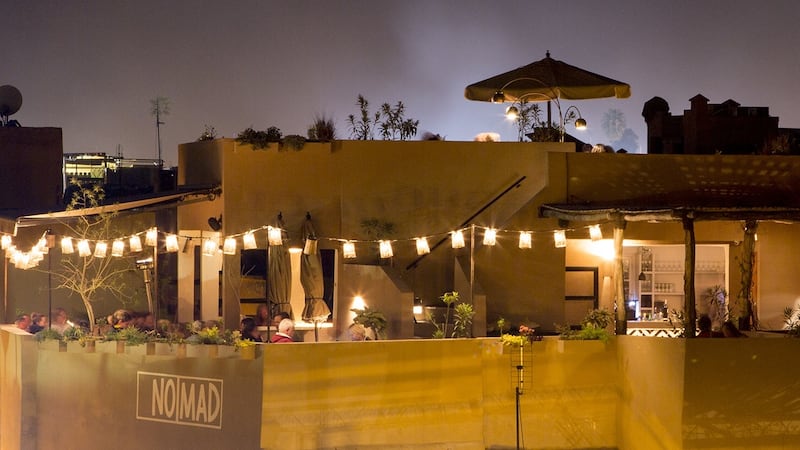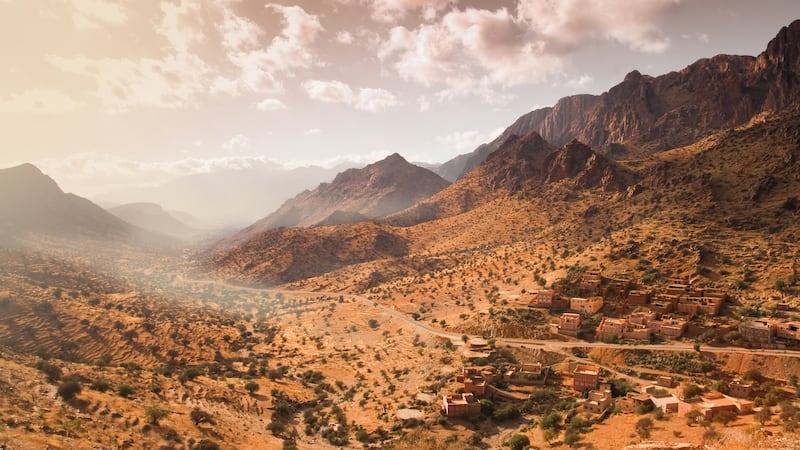Marrakesh is like a familiar, kind, insanely aesthetic friend that I keep going back to. I have been visiting for 12 years. She gets me all excited again about life, food, travel and the beauty of the Arab culture. I especially love to go in winter when the nights are crisp and the day’s sun warms you deep inside.
Some people feel hassled by the city. I have never felt that. A week’s trip to Morocco is ideal, but I spend only two days in Marrakesh as it can be crazy – good crazy – but crazy nonetheless.
Balance the city with time in the country, in the Atlas mountain region and the Berber area of the Quirka valley, both a one-hour drive from the city. Speaking French and/or Arabic is not essential, but it does help the whole trip to flow.


When I am in Marrakesh I stay in Riad La Maison, deep in the heart of the Medina. Its contemporary Moroccan-European interiors are a wonder and its fresh, inventive cooking a revelation. Nicole, the owner, is a stylist and fashion buyer with huge attention to detail.
After a lengthy breakfast on the Riad roof of Moroccan pancakes with local honey and egg tagine with cumin, I take a ramble through the streets leading to the chaotic marketplace of Place Jemaa el-Fna. Then, with an assault on the senses, I enter the souks. They may seem illogical at first, but they follow a natural order: spice, metal, tannery markets, and so on. Don’t forget: if you get lost look up and there are signposts.
A meeting point and navigational centre is Cafe des Epices in the spice market. After hours spent in the souk, it is essential to warm up on the roof and feel the sun again. Try their spiced coffee, and date, orange and avocado shake and the traditional harira soup. It will get you all fired up for another few hours of bargaining.
For a satisfying lunch, go to the contemporary Moroccan Nomad, just off the spice market. It’s bright and fun, with lemon and grey tiling and an open-plan space. It has a vibrant Moroccan menu, a plugged-in manager and its ice creams of amlou (sesame, argan oil and honey) and saffron are a thrill. On the way home, pop into Riad el Fenn (House of Art) to have a drink, and to absorb the astounding symmetry of art and interiors, then retreat back to your riad for dinner. The peacefulness of the riad will revive you and the food in most riads is excellent traditional home cooking.
I tend to do one day in the old town and one in the new town – Gueliz. I love to head to the blueness of Yves Saint Laurent’s house and the Majorelle Gardens. The bookshop has the best collection in town and the Cafe Bousafsaf one of the most intelligent menus I have read in a while. There are some concept stores across from the gardens, including 33 Rue Majorelle.
While in this part of town, head to Cafe de la Poste for early drinks and take in the old-world charm and the zippy front of house. Then on to Al Fassia, the all-woman high-octane restaurant: order the Moroccan salad starter and be transported.
There are a lot of places to eat in Marrakesh and there are not, if you understand me. I tend to revisit the places I have grown familiar with. I would rather make my way through a good restaurant’s menu than through a series of mediocre ones.
After two days I am ready to leave this relentless intoxicating city and move to the country. An enduring favourite is Kasbah Beldi beside Lalla lake and nestled at the base of the snow-capped Atlas mountains. The French owners suggest it “is about simplicity, nature and the kindness of the staff” and this is true. There is no wifi thankfully; it is about disconnecting here, the new ultimate luxury. There is very little to do and that is liberating.
Lunch under the trees cooked by Asna, the female Moroccan chef, is simple garden salads, dinner is by the fireside with no menu, just the typical tagine and couscous. Everything is grown on site and is a lesson in simplicity and flavour. Mohamed, the manager, takes great care of you, as do all the local Berber people who work there. Berber kindness is immeasurable; as the old man at the gates walks us to our room holding a candle to light our way and kisses my son Oni goodnight, our hearts fill.
Reluctantly we leave Beldi to try something new. We are not sure it can be beaten but then, in a remarkable way, it is. We drive through the chocolate coloured Quirka valley and see the traditional rammed earth walls of the Kasbah Bab Quirka. As the manager Hassam walks us through we are speechless.
The atmosphere almost twinkles with period pieces from the Marrakesh markets found by the owner Stephen Skinner, a banker/ lawyer and ex-Etonian with an eye for objects and a choreographer of good times. Yves Saint Laurent once had a party here and you can expect the Marrakesh movers and shakers to show up at some point during your stay. The residents play on the mystic and are universally engaging and creative.
As at Beldi, the ethos is simple – to create tranquillity and a closeness to nature. Here, your days are filled with walks in the valley and the national park or quiet moments in this otherworldly space.
Food is easy – Berber tanjini omelettes for breakfast, roasted beetroot soup with cinnamon and yogurt for lunch and a fireside dinner of French Moroccan styles – Kefta tagine with steamed egg followed by pastille au lait.
Locals only are employed here, and they work with enduring care and attention. The hotel garden is abundant with oranges and lemons and endless green bounty that transform the dishes. It is incredible value – a place locked in time and memories, oozing atmosphere and possibility. Places like this belong in a Hemingway novel and few exist any more in the paucity of this modern, generic world – but I am truly grateful this one does.
The trip ends and we have our final mint tea on one of the most perfect terraces in the world. The sun and the local people have enlivened us. We are locked in again to our commitment to visiting this, the safest Muslim country in the world.
There is understandable trepidation about visiting Muslim countries, but we feel there is no need for it here; go and enjoy in safety and experience the positives of this unique culture.
STAY:
Riad La Maison, 130 Derb Aghrab, Bab Aylan (airbnb.com/rooms/411375); Kasbah Beldi, Lac de Lalla Takerkoust, Talet; Kasbah Bab Qurika, Atlas Mountains
EAT:
Nomad, 1 Derb Aarjan. Marrakesh Medina; Café des Epices 75, Rahba Lakdima, Marrakesh Medina; Le Grand Café de la Poste for pre-dinner cocktails in Al Fassia Gueliz (all-female cooks and servers; booking essential); Lunch at Beldi Country Club is iconic, very French and upmarket; Riad El Fenn, the house of art for drinks and nibbles
DO:
Chic shopping at Marrakesh Life, Souk Cherifia – a favourite shop is Utter Style by ex-New York photographer Randall Bachner who designs sharp-tailored linen pieces: kaftans for her, shirts for him or vice versa. Have a look around the shops where Marrakesh Life is. There are a lot of European designers there. My new favourite is Artsi Ifrach who reworks old designer clothes. Topolina, Dar el Bacha is a riot of colour and print, from pineapple-emblazoned bomber jackets to circus-themed trousers. My all-time favourite shop is an obscure, very small shop run by a genial Moroccan man, Abdellafif El Maanaoui in Fondok Serssar 192 no2 Mouassine Marrakesh. Everyone knows him, he sells stunning old kaftans and gelabas, the traditional Moroccan dress and Berber garb that, contrary to expectations, is very chic.
TRAVEL
: Ryanair fly twice a week, Dublin to Marrakesh


















